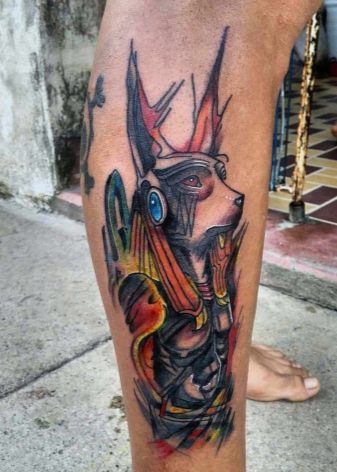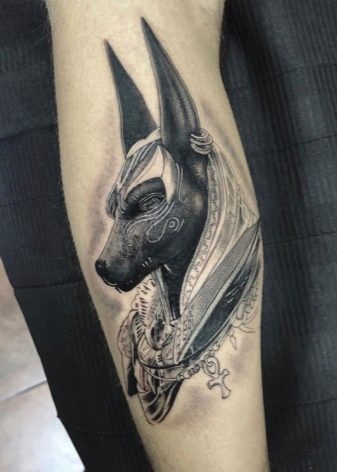All about the tattoo "Anubis"

Egyptian culture is very mysterious and enigmatic. It is not surprising that nowadays many tattoo lovers, both women and men, prefer drawings that are associated with this particular culture. Among such drawings are the sign of the god Ra, and the scarab, and the Egyptian pyramids. Tattoos with the image of the god Anubis, who held a special position in the Egyptian pantheon, also look very interesting. The article will discuss what a tattoo with this deity means, what meaning it carries in itself, what options for its execution are the most popular.
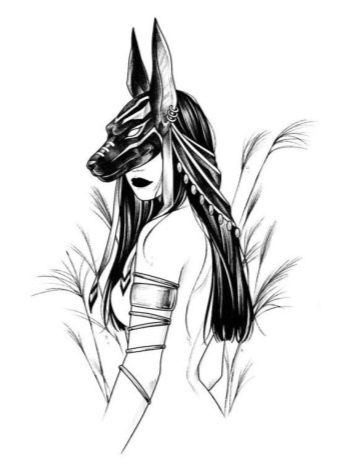
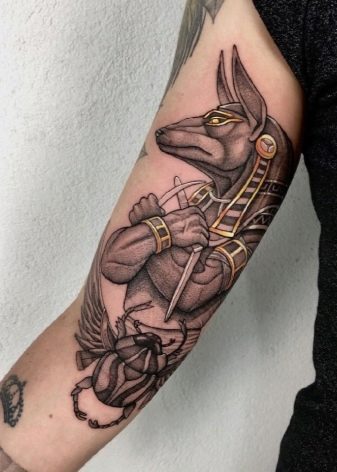
Total value
To understand what the Anubis tattoo means for women and men, you must first of all find out who Anubis himself is. To do this, it is worth turning to the culture of Ancient Egypt, which for many is shrouded in many mystical secrets and mysteries. According to Egyptian myths, there was a kind of temple of numerous gods, each of which ruled over one of the spheres of human lives. Among them was Anubis, who was considered the god of death. The mere mention of him caused awe among the ancient Egyptians, because this god was both feared and deeply respected.
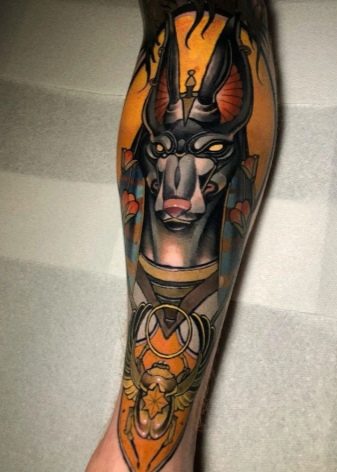
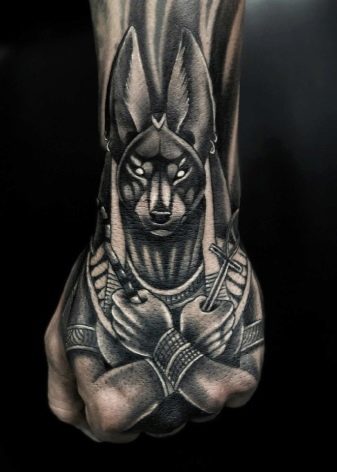
Anubis is a figure of a man of strong constitution with a jackal's head. It is believed that he is the creator of funeral rites, embalming and mummification. Some also perceive him as the guardian god of medicines and poisons.
In addition, the Egyptians believed that he is the patron saint of the necropolis, and also leads the souls of the departed people to the kingdom of the dead, directly to the judgment of Osiris. Osiris, according to Egyptian mythology, was listed as the father of Anubis. It is believed that Anubis was the first to mummify his body.
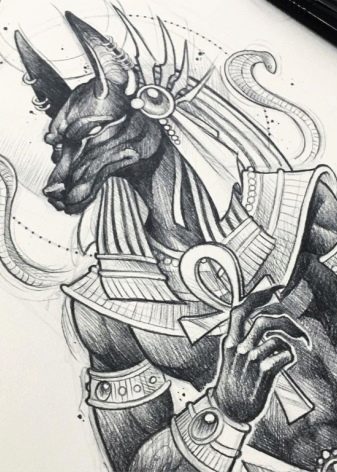
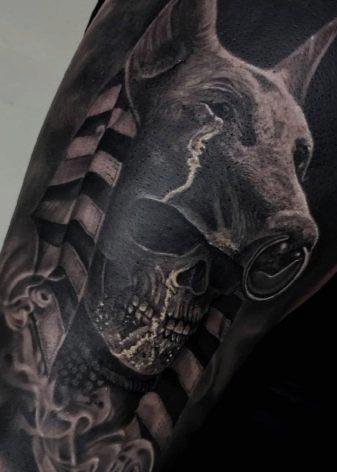
Many perceive Anubis as a guardian of scales - this is how one of the names of this deity is translated... At the trial of Osiris, it was Anubis who decided whether a person lived a decent life, whether he deserved to continue his life in the afterlife. The trial was carried out as follows: on one of the scales was placed a human heart, which symbolized the emotional component, and on the other side was an ostrich feather.
As a rule, if the feather turned out to be heavier than the heart, it testified that the person had lived a righteous life and done many good deeds, and therefore the way to the afterlife was open to him, he could continue his life there. Otherwise, if the heart turned out to be heavier than a pen, it meant that the person was a sinner who had committed many bad deeds in his entire life. With this outcome, the soul of the deceased was fed to Amata, who was a monster with the body of a hippopotamus, paws and mane of a lion and a crocodile mouth, after which final death occurred.
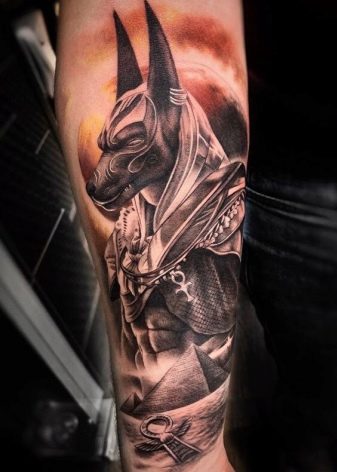
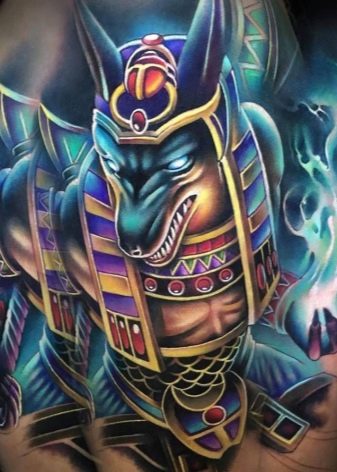
Having studied all this information, you can give an interpretation of the tattoo with this god.
In general, since Anubis is associated with the afterlife, many mistakenly interpret the meaning of a tattoo with him in a negative way, believing that it radiates negative energy and brings only misfortunes and problems to its owner.
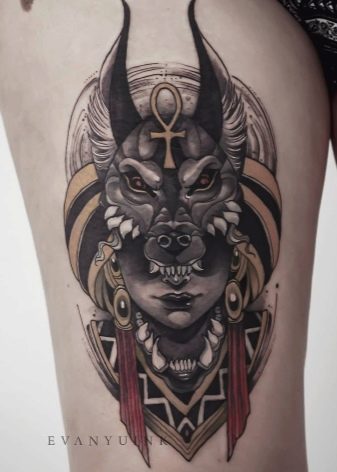
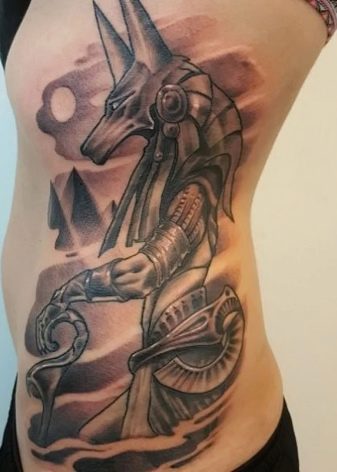
However, in fact, such a body pattern is a talisman that protects a person from negativity, helps to strengthen positive personal qualities.... For men, it means inner strength, the ability to endure any difficulties in life with dignity and steadfastness, as well as the harmony of light and dark, the desire to find their true path. For girls, this tattoo symbolizes protection from unclean forces, enlightenment, the ability to achieve a set goal, success in any endeavors and fearlessness in the face of life's difficulties. However, the fair sex rarely choose such tattoos as a tattoo, preferring more feminine designs.
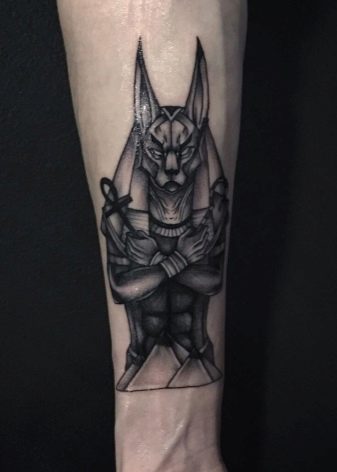
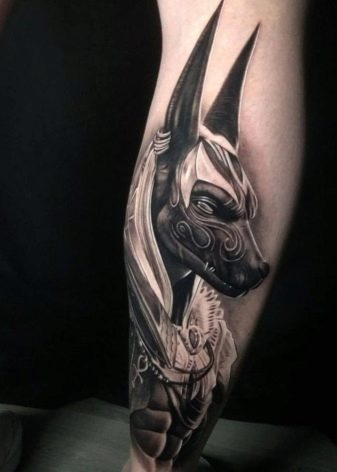
Types and sketches of tattoos
There are many variations of Anubis tattoo designs. Many, as a rule, prefer the drawings of this god in the style of realism or graphics, because such tattoos look bright, spectacular and naturalistic, which attracts the attention of others. On such tattoos, both an integral image of Anubis, along with his body, and only his head can be present.... In the latter case, the drawing is supplemented with specific elements indicating the Egyptian component of the tattoo, in particular, images in the form of the outlines of the moon, the mummy of Sekhem, wands, pyramids, the eye, which is the designation of the god Ra, and not only - they are usually placed in the background.
They combine the image of Anubis with elements that evoke associations with the afterlife, including skulls and bones.
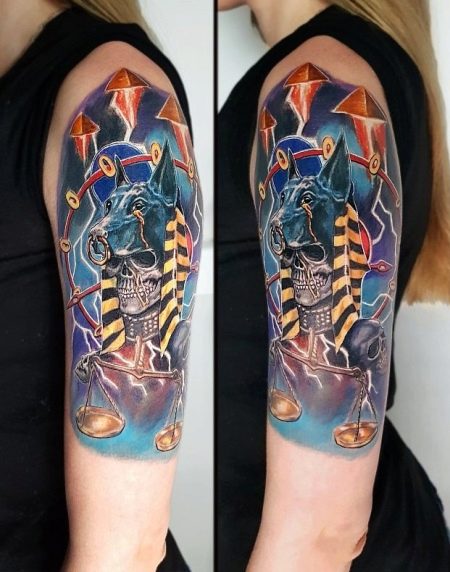
In addition, Anubis' tattoo often depicts on the background of the desert, which is closely related to Egyptian mythology: so, according to myths, it was through the desert that the god of death led the souls of all the dead into the kingdom of the dead.
There are also simpler options for tattoos with Anubis. As a rule, such drawings are performed in the style minimalism... As a result, such tattoos turn out to be very restrained, discreet and strict in appearance, which is their main feature.

Moreover, there are both color options for such tattoos, and black and white - here it already depends on the preferences of the person himself, however, black and white tattoos look more harmonious, since Anubis is associated by many with everything dark.
However, we note that, regardless of what color scheme was chosen, in the drawing, the god of death is depicted as powerful in any case, which is especially emphasized by his strong physique.
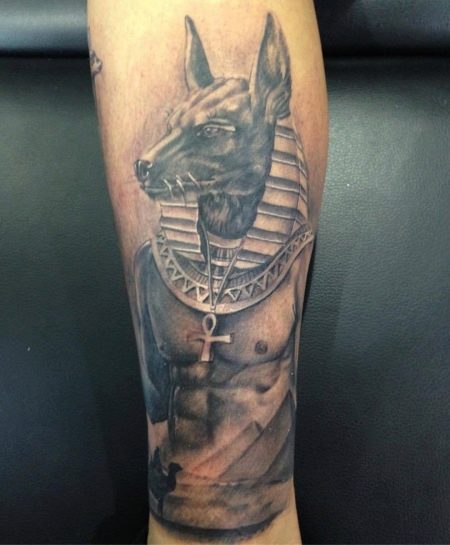
Tattoos made by in the style of Egyptian letters, which adds authenticity to the picture.If desired, such an image can be supplemented with specific Egyptian symbols, but before that you need to know exactly about their meaning, because not all of them symbolize exclusively positive ones. In such drawings, the deity itself is usually not drawn in detail, only his full-length silhouette is depicted or only his face in the form of a jackal's head.
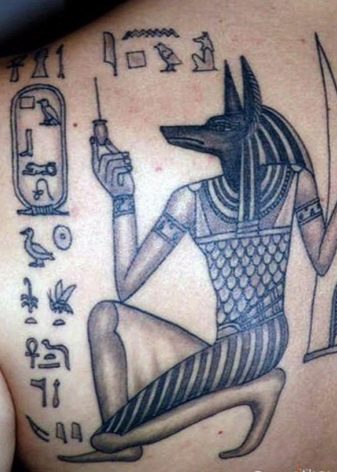
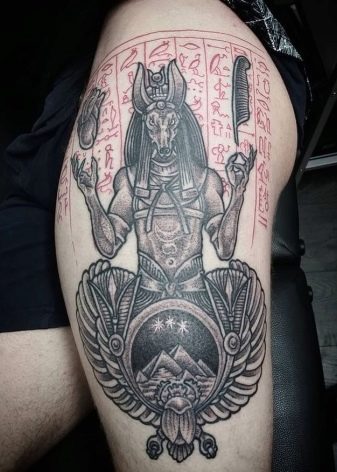
A sketch with the mask of Anubis, behind which a woman is hiding, is quite common. Such tattoos, as a rule, are made mainly for aesthetic reasons, and they are most often applied by men.
Are no less popular and tattoos with Anubis, in whose hands are the scales... A heart and a feather are traditionally depicted on the scales of these scales. Such a tattoo symbolizes balance, a balance between the dark and light sides of human nature.
But if the heart in the picture is in the hand of an Egyptian deity, then the tattoo means a righteous life and all the good that a person has already managed to do in his entire life.

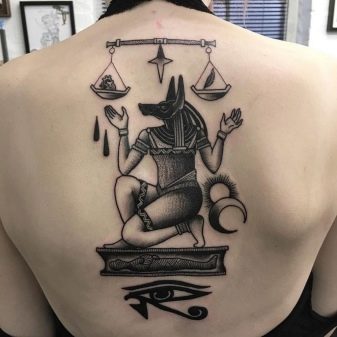
Drawings with Anubis, in whose hands there is a weapon, look no less interesting. Such a tattoo means a person's readiness to withstand life's troubles, overcome all difficulties and achieve what he wants at any cost.
Location options
The location for a tattoo with Anubis must be chosen depending on the preferences of the person, as well as on the scale of the future drawing and its shape.
So, on the shoulder, forearm, entirely on the arm, it can be a sleeve, you can place a large and vertically elongated tattoo. Usually, such tattoos are applied to their bodies by men. But the fair sex prefer places such as the calf of the leg or the area of the ribs, where you can also place a large tattoo, which will be extended vertically.
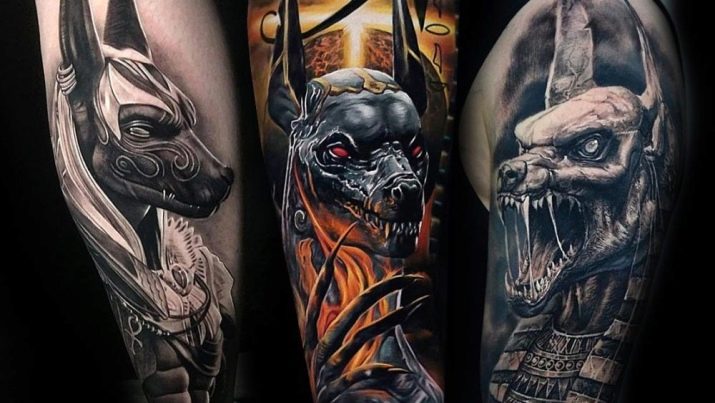
Larger patterns, elongated in width, should be placed on the chest or back. There they will look most appropriate. Such images look especially impressive on the male body.
But miniature drawings in the style of minimalism would be best placed on the hand or wrist, in the ankle area or on the neck. Such drawings are most often preferred by women.
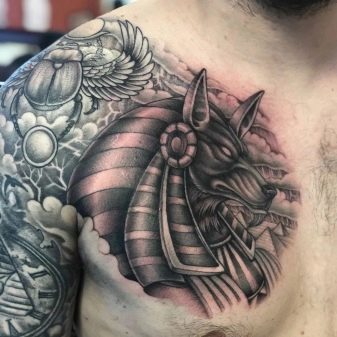
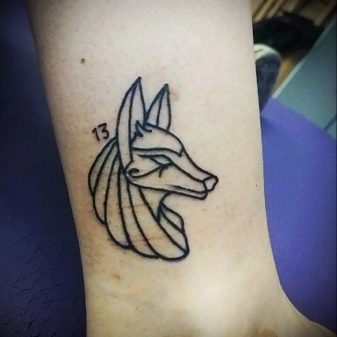
Please note that the process of applying some body designs can be very painful. This is especially true of places such as the ribs and knees, palm, face, knuckles, ankle. The increased painfulness of the application is explained by the fact that the skin in these places is either strewn with a large number of nerve endings, or is as close as possible to the bone.
Therefore, before choosing one of these body parts as a place for application, think several times if you can endure the whole process of tattooing. Otherwise, it is better to opt for a different part of the body.
